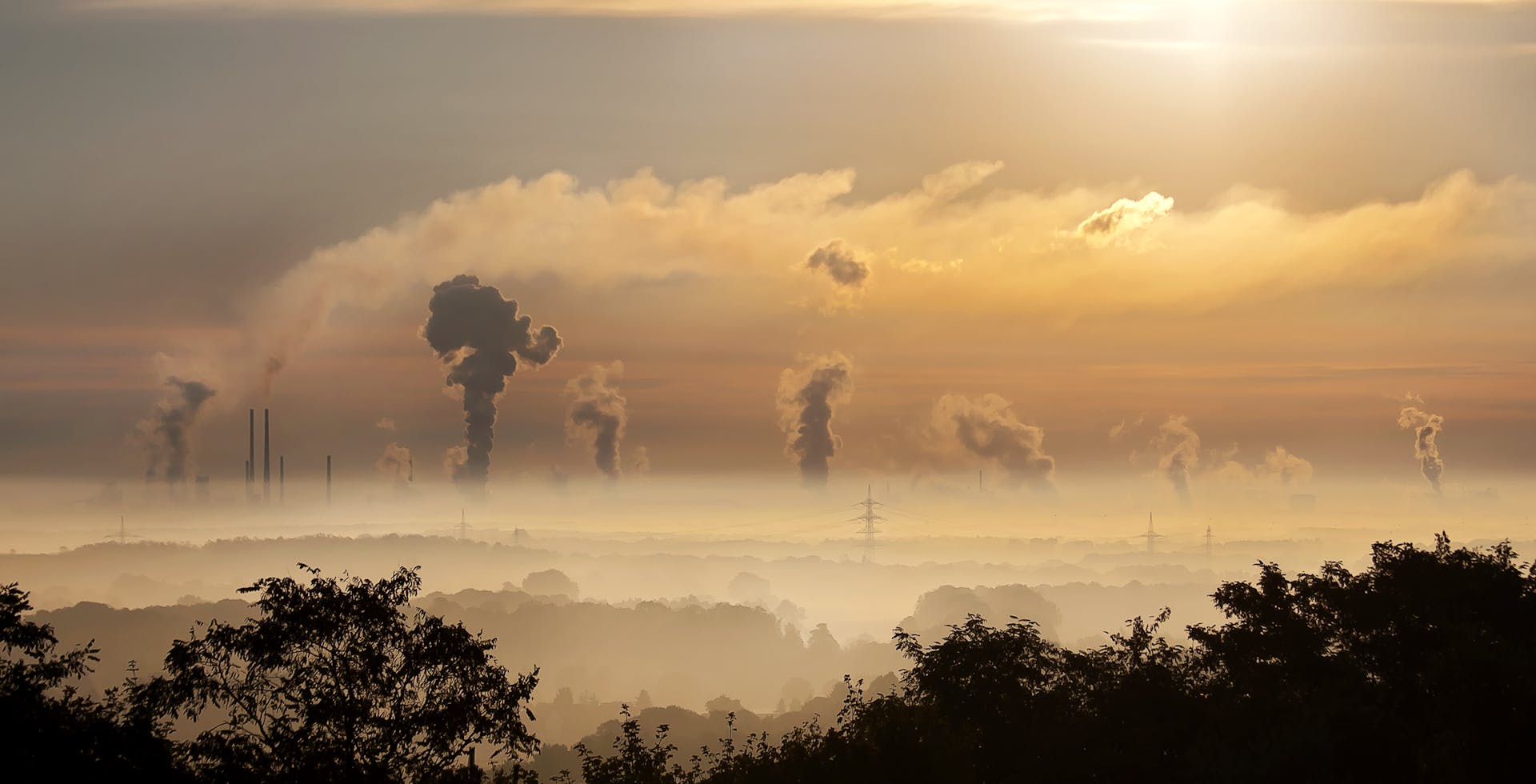
The Voluntary Carbon Credit Market is a global system that allows individuals, organizations, and governments to offset their greenhouse gas emissions by purchasing carbon credits from projects that reduce emissions elsewhere.
Carbon credits are generated by projects that reduce greenhouse gas emissions, such as renewable energy projects, reforestation efforts, and energy-efficient technologies.
These credits can be traded on the market, allowing buyers to offset their emissions.
The market is voluntary, meaning that participants are not required to buy or sell carbon credits.
Explore further: Carbon Credits
What Are Credits?
In the voluntary carbon credit market, credits are a crucial component. Carbon credits, also known as carbon allowances, are permits that allow the owner to emit a certain amount of carbon dioxide or other greenhouse gases.
One credit allows the emission of one ton of carbon dioxide or the equivalent of other greenhouse gases. The ultimate goal of the carbon credit system is to reduce the emission of greenhouse gases into the atmosphere.
Discover more: How to Trade Carbon Credits
Key Concepts and Programs
The voluntary carbon credit market is based on a clever mechanism to reduce greenhouse gas emissions. Companies receive a set number of carbon credits that decline over time, giving them a monetary incentive to reduce their emissions.
In fact, this system is similar to the cap-and-trade model used to reduce sulfur pollution in the 1990s. Companies can sell any excess credits to another company, creating a market for carbon credits.
Here are some key concepts and programs to know about the voluntary carbon credit market:
- Carbon credits create a monetary incentive for companies to reduce their carbon emissions.
- Companies receive a set number of credits that decline over time, allowing them to sell any excess credits to another company.
- The carbon credit market is based on the cap-and-trade model used to reduce sulfur pollution in the 1990s.
- Negotiators at the Glasgow COP26 climate change summit agreed to create a global carbon credit offset trading market in November 2021.
Who Can Participate
In the voluntary carbon credit market, several key participants play a crucial role. Project developers work to produce the carbon credits that other sectors or industries will buy.
Consumers are also an essential part of the market, as they purchase carbon credits from producers. This group includes private companies, NGOs, governments, universities, and individuals.
Retail traders purchase credits in bulk from suppliers and sell them to the end buyer, usually for a commission. They bundle the credits in portfolios to make them more attractive to consumers.
Broaden your view: How to Trade Carbon Credits
Brokers buy carbon credits from traders and market them to consumers, charging a commission in the process. It's common for a broker to also act as a trader.
Third-party verifiers, typically NGOs, ensure that a project meets its stated objectives and volume of emissions.
Here's a breakdown of the different participants in the voluntary carbon credit market:
Landowners can also participate in the market by selling carbon credits if they enroll their land into a project, such as reforestation or aforestation.
Global Initiatives and Agreements
The Kyoto Protocol, signed in 1997, divided countries into industrialized and developing economies, with industrialized countries operating in their own emissions trading market. This market allowed countries to sell surplus credits to those that didn't meet their targets.
The Kyoto Protocol also introduced the Clean Development Mechanism, which issued Certified Emission Reduction (CER) carbon credits to developing nations for supporting sustainable development initiatives. These credits were traded in a separate market.
The Paris Climate Agreement, signed by over 190 nations in 2015, set emission standards and allowed for emissions trading. The U.S. dropped out in 2017 but rejoined in 2021.
The Glasgow COP26 Climate Change Summit in 2021 saw nearly 200 countries implement Article 6 of the Paris Agreement, allowing nations to work toward climate targets by purchasing offset credits.
Worldwide Initiatives
The Kyoto Protocol was a 1997 agreement that aimed to reduce worldwide carbon emissions. It was developed by the United Nations' Intergovernmental Panel on Climate Change (IPCC).
The agreement divided countries into industrialized and developing economies, with industrialized countries operating in their own emissions trading market. Industrialized countries were collectively called Annex 1.
Countries in Annex 1 could sell their surplus credits to countries that didn't achieve their Kyoto-level goals through an Emissions Reduction Purchase Agreement (ERPA). A country could sell its surplus credits if it emitted less than its target amount of hydrocarbons.
The Kyoto Protocol also introduced the Clean Development Mechanism, which issued Certified Emission Reduction (CER) carbon credits to developing nations. These credits were awarded for supporting sustainable development initiatives.
The first commitment period of the Kyoto Protocol ended in 2012. The U.S. had already dropped out in 2001.
Paris Climate Agreement
The Paris Climate Agreement is a significant global initiative aimed at reducing greenhouse gas emissions. More than 190 nations signed the agreement in 2015.
The agreement set emission standards and allowed for emissions trading, providing a framework for countries to work together towards a common goal. The U.S. dropped out of the agreement in 2017, but rejoined in January 2021.
The Paris Climate Accord, as it's also known, aims to limit the global temperature increase to less than 2° Celsius above preindustrial levels by 2100. This target is crucial for mitigating the effects of climate change.
The agreement was signed by leaders of more than 180 countries, demonstrating a global commitment to addressing climate change. The U.S. rejoined the agreement under President Biden, marking a significant shift in the country's stance on climate change.
Glasgow Climate Summit
The Glasgow COP26 Climate Change Summit was a major breakthrough in global climate efforts. It brought nearly 200 countries together to implement Article 6 of the 2015 Paris Agreement.
This agreement allows countries to work towards their climate targets by purchasing offset credits that represent emission reductions by other countries. The hope is that this will encourage governments to invest in initiatives and technology that protect forests and build renewable energy technology infrastructure.
Brazil's chief negotiator, Leonardo Cleaver de Athayde, saw the potential for Brazil to be a major trader of carbon credits. He believed it would spur investment and the development of carbon projects that could deliver significant emissions reductions.
The accord included several provisions aimed at reducing overall global emissions. A zero tax on bilateral trades of offsets between countries was established, as well as canceling 2% of total credits.
5% of revenues generated from offsets are placed in an adaptation fund for developing countries to help fight climate change. This is a significant step forward in supporting countries in need.
Market Dynamics and Pricing
The carbon credit market is a complex and dynamic space, with prices varying widely depending on several factors. The price of carbon credits in the voluntary carbon market (VCM) is not as straightforward as in the compliance market, with prices ranging from less than $1/ton CO2e to $119/ton CO2e.
Several variables contribute to the pricing of carbon credits, including the size of the project, location of the offset, vintage, quality, and co-benefits. Larger projects with higher volumes of carbon credits often have a lower price, while smaller projects are more expensive to implement but produce fewer credits.
Carbon prices on the VCM start at less than $1/ton CO2e and increase to $119/ton CO2e, with almost half of emissions priced at less than $10/tCO2e. Renewable energy projects have the lowest average prices at $1.4/ton CO2e, while forestry and land use projects are on the higher end of the scale at $4.3/ton CO2e.
Here's a breakdown of the price ranges for different types of projects:
To meet the temperature goals outlined in the Paris Agreement, the High-Level Commission on Carbon Prices stated that prices of at least $40-80/tCO2 were necessary by 2020 and $50 to $100/tCO2e by 2030.
Inflation Reduction Act
The Inflation Reduction Act is a significant piece of legislation signed into law on Aug. 16, 2022.
It aims to reduce the deficit, fight inflation, and reduce carbon emissions.
The Act is very focused on cleaning up the environment, rewarding high-emitting companies that store their greenhouse gases underground or use them to build other products.
Significantly expanded tax credits are now available, increasing from $50 to $85 for each metric ton of captured carbon stored underground.
An increase from $35 to $60 for each ton of captured carbon used in other manufacturing processes or for oil recovery is also included.
These more generous credits are hoped to convince investors to make a bigger effort at capturing carbon.
The previous tax incentive, known as 45Q, was accused of only paying enough to make easy carbon capture projects worth pursuing.
Other Variables Contribute to Credit Pricing
The value of a carbon credit can vary significantly based on several variables beyond the type of environmental project. Size of project is one such variable, with larger projects that produce higher volumes of carbon credits often having a lower price.
Smaller projects, on the other hand, are often more expensive to implement but produce fewer carbon credits. This is evident in the fact that renewable energy projects have the lowest average prices at $1.4/ton CO2e.
Location of the offset also plays a crucial role in determining the price of a carbon credit. Projects located in areas with conflict and higher risk may be more expensive due to the increased uncertainty and potential risks involved.
Vintage is another important factor, with older projects typically priced lower. This is because older projects have already generated emissions reductions, reducing their value.
Quality of the project is also a significant factor, with projects certified to higher standards commanding a higher price. Co-benefits, or positive impacts beyond greenhouse gas emissions, can also increase the value of a carbon credit.
Here's a breakdown of the different variables that affect carbon credit pricing:
These variables can significantly impact the price of a carbon credit, making it essential to consider them when evaluating the value of a project.
Demand Scenarios
The demand for carbon credits is expected to skyrocket in the coming years. According to the Taskforce on Scaling Voluntary Markets, the market will grow to around 15-fold from 0.1 to 1.5-2 GtCO2 of carbon credits per year in 2030.
This rapid growth will be driven by a surge in voluntary demand. The taskforce projects that the market will scale up to a maximum of 100-fold by 2050, with 7-13 GtCO2 of carbon credits per year.
Producing this scale of carbon elimination will be a massive challenge, but it will also provide many nations and corporations with incredible opportunities. The taskforce emphasizes the need for emissions reduction to be implemented as urgently as possible.
Compliance and Registry
The Voluntary Registry Offsets Database is a game-changer for increasing transparency in the carbon offset market. It contains all carbon offset projects, credit issuances, and credit retirements listed globally by four major voluntary offset project registries.
You might enjoy: Carbon Offset Credit Market Crash
These registries are American Carbon Registry (ACR), Climate Action Reserve (CAR), Gold Standard, and Verra (VCS), which generate almost all of the world's voluntary market offsets. They also include credits eligible for use under the California / Quebec linked cap-and-trade programs and Washington's cap-and-invest program.
The database is available for download as an Excel sheet, which can be accessed by clicking on the link provided. If it opens in GoogleSheets, it's recommended to download it as an Excel sheet for easier use.
U.S. Clean Air Act
The act has been instrumental in reducing emissions of sulfur dioxide from coal-fired power plants, a major cause of acid rain in the 1980s. This is a significant achievement, especially considering the devastating effects of acid rain on the environment.
The U.S. Clean Air Act has set a precedent for environmental regulations around the world. Its impact on reducing emissions and promoting sustainability is undeniable.
What Is Compliance?
Compliance is a regulatory framework that governs the cap-and-trade system of the carbon market. It's a system where only a certain amount of allowances, or permits, are created to limit the amount of greenhouse gases (GHGs) that can be emitted.
These allowances are traded, and if an industry emits less than its allowance, it can sell the extra credits to someone else. This financial motivation can encourage participants to reduce their overall emissions.
The compliance market is regulated by national, regional, or international carbon reduction regimes. Examples of compliance carbon markets include the Kyoto Protocol and the European Union emissions trading system.
The cap represents a finite supply of allowances, which can't be created or removed, but can be traded. This system is in place to limit the amount of GHGs that can be emitted.
In the compliance market, companies must reduce their emissions to meet their mandated targets. If they achieve this, they can sell surplus credits to others.
Registry Offsets Database
The Registry Offsets Database is a powerful tool developed by the Berkeley Carbon Trading Project. It contains all carbon offset projects, credit issuances, and credit retirements listed globally by four major voluntary offset project registries.
These registries, including American Carbon Registry (ACR), Climate Action Reserve (CAR), Gold Standard, and Verra (VCS), generate almost all of the world's voluntary market offsets. They also include credits eligible for use under the California / Quebec linked cap-and-trade programs and Washington's cap-and-invest program.
The database is designed to increase transparency in the carbon offset market, providing researchers and offset buyers with a single platform to view offset credits and projects. Dynamic charts allow users to see trends over time and explore projects and credits by location, type, registry, and more.
The database is available for download as an Excel sheet, which can be found on the Berkeley Carbon Trading Project's website. If it opens in Google Sheets, it's recommended to download it as an Excel sheet.
Here is a list of available database versions:
- v2024-12-year-end (download the registry files here)
- v2024-10 (download the registry files here)
- v2024-08 (download the registry files here)
- v11 - with data through March 31, 2024 (download the registry files here)
- v10 - 2023 year end version - with data through December 31, 2023
- v9 - with data through Nov 1, 2023
- v8 - with data through May 10, 2023
- v7 - 2022 year end version - with data through December 31, 2022
- v6 with data through November 9, 2022
- v5 with data through March 31, 2022
- v4 - 2021 year end version - with data through December 31, 2021
- v3 with data through November 24, 2021
- v2 with data through May 3, 2021
- v1 with data through December 8, 2020
Compliance
In the compliance market, allowances are the exchanged commodity, facilitated by the cap-and-trade system.
The compliance market is regulated by national, regional, or international carbon reduction regimes, such as the Kyoto Protocol and California Carbon Market.
Compliance credits tend to be more expensive because they're driven by regulatory obligations.
Companies and governments have adopted emission limits established by the United Nations Convention on Climate change, making them eligible to purchase compliance credits.
Companies that surpass their emission targets can sell their surplus credits to those looking to offset emissions.
Here's a breakdown of the key characteristics of the compliance market:
Frequently Asked Questions
How big is the voluntary carbon market?
As of 2023, the voluntary carbon market is valued at approximately $10.8 billion. This significant market size reflects the growing demand for voluntary carbon offsets among major companies.
What are the top voluntary carbon markets?
According to the Abatable VCM Investment Attractiveness Index, the top voluntary carbon markets for 2024 are Colombia, Kenya, Cambodia, Mexico, and Peru. These countries offer the most attractive opportunities for investors in the voluntary carbon market.
What are the two types of carbon credit market?
There are two main types of carbon credit markets: Compliance, which is mandatory for companies to meet climate targets, and Voluntary, which allows organizations to offset their emissions on a voluntary basis.
Sources
- https://www.investopedia.com/terms/c/carbon_credit.asp
- https://gspp.berkeley.edu/research-and-impact/centers/cepp/projects/berkeley-carbon-trading-project/offsets-database
- https://carboncredits.com/what-is-the-voluntary-carbon-market/
- https://www.insideenergyandenvironment.com/2024/06/engaging-in-voluntary-carbon-markets-overview-of-key-developments-risks-and-opportunities/
- https://about.bnef.com/blog/five-need-to-knows-about-the-future-of-voluntary-carbon-offset-markets/
Featured Images: pexels.com


